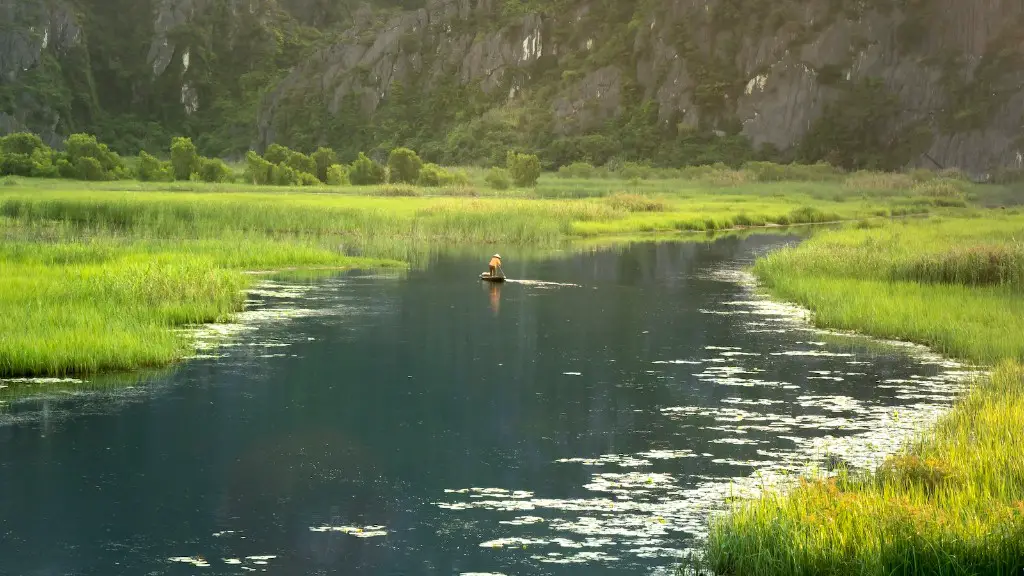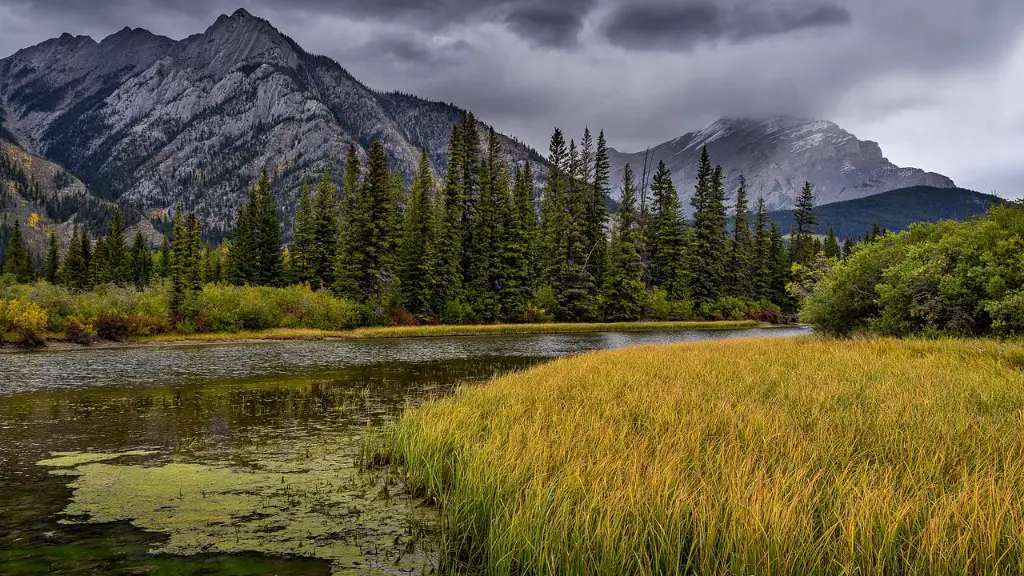The Mississippi River is the second longest river in the United States, and it is one of the most important waterways in the country. The Mississippi River is more than 2,300 miles long and it is the primary drainage in the middle and upper Mississippi Valley. It starts in northern Minnesota and flows south all the way to the Gulf of Mexico.
The Mississippi River’s ecosystem is incredibly rich, with species of fish, birds and mammals living along its banks. Along with its incredible biodiversity, the river provides necessary transportation and irrigation networks, as well as local recreation, like fishing and kayaking.
The Mississippi River also has a long historical significance for the United States. Native Americans and European settlers have used it for fishing grounds and navigation since the 1700s. During the United States’ westward expansion, the Mississippi River was a vital access point and helped shape the development of the population.
Today, the banks of the Mississippi River are around populated cities and industrial areas. The river is susceptible to pollution from these urban sources, and it is important that those living near the river work to protect the natural ecosystem. Organizations such as the Mississippi River Network coordinate research and conservation efforts to keep the river clean.
The main factor that influences the overall ability of the Mississippi River to sustain itself is its water quality. The Mississippi River Water Management Act was created to protect and improve the river by controlling the amount of water used during certain times. This water is used for navigation, irrigation, recreational activities and aquatic life, and it is protected by the federal government.
The Mississippi River is an incredibly important waterway, and it is essential that everyone living near the river works together to keep it clean. One of the most important ways individuals can do this is by reducing pollutants such as consumer products, automotive emissions and agricultural runoff from entering the river. Education is also important in helping people understand the importance of the river and how to maintain its health.
River Management
The Mississippi River is managed by the U.S. Army Corps of Engineers. They are responsible for ensuring that the river meets the depth, width and quality standards necessary for navigation. The Corps of Engineers also manages the locks and dams along the river which provide water flow control and help manage flood levels.
The Mississippi River also has a number of other management organizations, including the Mississippi River Commission and the Mississippi River Basin Initiative. These groups manage the long-term health of the river and its associated ecosystems, as well as coordinate programs for flood control. The laws, policies and regulations governing management of the river are generally developed through collaboration between government agencies and other stakeholders, such as environmental groups.
In addition to the Army Corps of Engineers and the management organizations, there are also numerous local organizations that are dedicated to the health of the river. These groups work to protect the river from pollutants, manage recreational activities and promote public education about the importance of the Mississippi River.
Environmental Impact of Human Activity
Human activities, such as agriculture, industry and municipal wastewater, can have a large impact on the Mississippi River. The river is the recipient of a large amount of pollutants and nutrients, such as nitrogen and phosphorus, from these activities. Nutrient pollution in the Mississippi River contributes to algae growth, which can harm local wildlife and increase water treatment costs. Additionally, the river is subject to changes in water flow and temperature, which can affect the health of aquatic plants and animals.
The Environmental Protection Agency has set standards for the amount of pollutants that can enter the Mississippi River on an annual basis. They have also established voluntary programs to help reduce pollution from industrial facilities, including wastewater and stormwater treatment, as well as nonpoint source pollution prevention.
Along with the Environmental Protection Agency, the United States Geological Survey and the United States Fish and Wildlife Service work to monitor and protect the Mississippi River. These agencies provide scientific information about the river’s health and develop strategies for protecting the habitats of fish and wildlife.
The health of the Mississippi River is dependent on the collective effort of citizens, businesses and government. Everyone needs to work together to reduce pollution, conserve the river’s resources and protect its ecosystem.
Effects of Climate Change
Climate change is having an effect on the Mississippi River, as it has on all major rivers across the globe. Rising temperatures have caused increased evaporation, leading to changing river levels. This could cause the river to become more turbid, meaning more sediment will end up in the water. The sediment clouds the water, preventing light from reaching aquatic plants, which is necessary for photosynthesis.
Climate change has also contributed to changes in precipitation patterns. Heavy rains can lead to flooding, and droughts can cause river levels to drop. This can make flooding a more frequent issue and make the river less hospitable for wildlife. Increasing temperatures and decreased water levels could also affect the river’s ability to support recreational activities.
Reducing emissions and conserving natural resources is the best way for people to help mitigate the effects of climate change on the Mississippi River. Individuals can also work to reduce water pollution, limit runoff from agricultural land and improve water quality by removing pollutants and restoring habitats.
Flood Mitigation
Flooding is a common issue along the Mississippi River. The river is prone to severe flooding due to heavy rains, flooding of tributaries, rapid snowmelt and levee breaches. Flood mitigation is essential to reduce risk of flooding, and many organizations are working to develop strategies to help reduce risk.
The U.S. Army Corps of Engineers is a major player in flood mitigation efforts. They are responsible for maintaining the levees and dams along the river, and they are responsible for building or repairing them when necessary. Additionally, the Corps of Engineers has constructed channels to divert floodwaters away from populated and agricultural areas.
Local municipalities and organizations also play a role in flood mitigation. They work with the Army Corps of Engineers to create plans for flood management and evacuation. Additionally, individual citizens can do their part to help mitigate the effects of flooding, by following flood insurance guidelines, evacuating when necessary, and keeping an eye out for phrases of potential flooding.
Economic Impact
The Mississippi River has had a major economic impact on the United States. It has provided access to markets and transportation opportunities, as well as a source of natural resources and recreational activities. The river has also been integral in the development of industry in the region, and it continues to be a major source of material goods.
The economic benefit of the Mississippi River is due in part to its size and its navigability. Its length and width provide access to a large area, allowing for efficient transportation and commercial activities. This helps to stimulate trade and create economic opportunities for local businesses.
Additionally, the Mississippi River provides recreational opportunities that bring in tourists and other visitors. The river is a popular destination for bass fishing, kayaking, boating and other activities, and this brings money into local economies. The river can also serve as a source of inspiration, providing a beautiful backdrop for artists, writers and photographers.
The Mississippi River is an essential part of the United States. Not only is it an essential part of the local ecosystems and economy, it is also vital to the development of the nation. It is important that everyone works to maintain the river and protect its natural environment.





